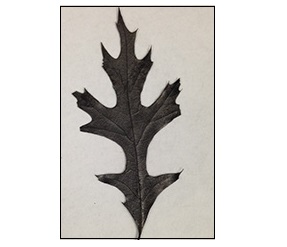By baking a leaf and adding some sodium, scientists at the University of Maryland were able to create a functional battery.

“Leaves are so abundant. All we had to do was pick one up off the ground here on campus,” said Hongbian Li, a visiting professor at the University of Maryland's department of materials science and engineering and one of the main authors of the paper.
While other studies have similarly used things like melon skin, banana peels, and peat moss to create a functional battery, the leaf has proven to need far less preparation than anything before it.
The goal in doing this — that is, using organic material for storing / transferring power — is to create a battery using sodium as opposed to lithium, because the former can hold more charge. It has not proven successful yet because it cannot handle as many charge / discharge cycles as lithium.
Also holding back the advancement of sodium-based battery technology has been finding an anode material that is compatible with sodium. Graphene’s been looked into — researchers dot various materials with it to attract and retain the sodium, but the process has proven time consuming and expensive to produce.
The reason why the leaf was looked into is because its lower side is studded with pores that allow it to absorb water. By heating the leaf for an hour at 1,000 degrees Celsius, its underlying carbon structure is burned off, while the top layer is transformed into sheets of nanostructured carbon which can be used to absorb the sodium that carries the charge.
“The natural shape of a leaf already matches a battery's needs: a low surface area, which decreases defects; a lot of small structures packed closely together, which maximizes space; and internal structures of the right size and shape to be used with sodium electrolyte,” said Fei Shen, a visiting student in the department of materials science and engineering and the other main author of the paper.
“We have tried other natural materials, such as wood fiber, to make a battery,” said Liangbing Hu, an assistant professor of materials science and engineering. “A leaf is designed by nature to store energy for later use, and using leaves in this way could make large-scale storage environmentally friendly.”
In terms of outlook, Hu said the team will “investigate different types of leaves to find the best thickness, structure and flexibility” for electrical energy storage.
For those curious, there are no plans to commercialize the technology at any point in the immediate future.
To learn more, read the full report, entitled Carbonized-leaf Membrane with Anisotropic Surfaces for Sodium-ion Battery, which was published in ACS Applied Materials & Interfaces.
Via the University of Maryland
Advertisement
Learn more about Electronic Products Magazine





